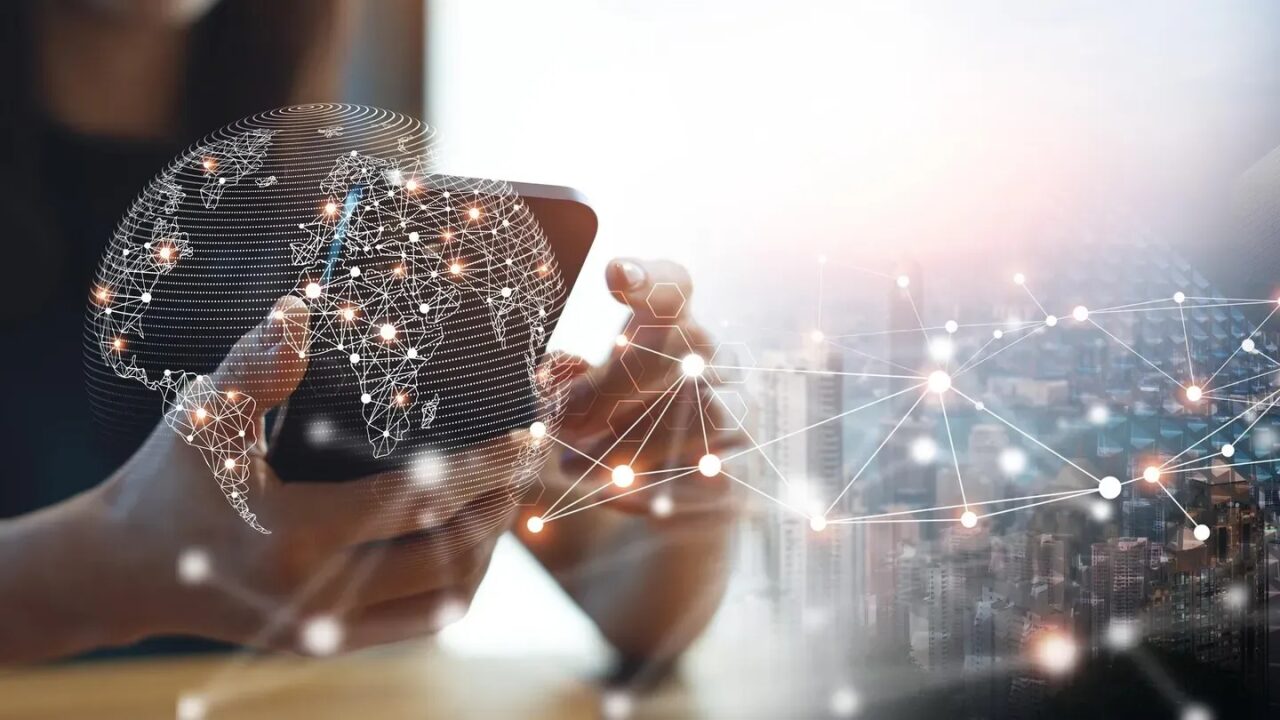10 Wonderful Examples Of Using Artificial Intelligence (AI) For Good
2 July 2021
One of the many benefits of using artificial intelligence (AI) is to help us view societal problems from a different perspective. While there’s been much hubbub about how AI might be misused, we must not overlook the many ways AI can be used for good. Our global issues are complex, and AI provides us with a valuable tool to augment human efforts to come up with solutions to vexing problems. Here are 10 of the best ways artificial intelligence is used for good.
 For Good.png)
Cancer Screening
Artificial intelligence, powered by deep-learning algorithms, is already in use in healthcare. Specifically, AI’s imaging capabilities are promising for cancer identification and screening, including breast cancer. Artificial intelligence is also used to predict the development of diseases across a healthcare network. A group at Mount Sinai used deep learning-based AI algorithms to predict the development of diseases with 94% accuracy, including cancers of liver, rectum, and prostate. Thanks to published cancer research, clinical trials, and drug development, there’s a plethora of data that AI can help to review and then guide healthcare decision-making.
Save the Bees
Did you know The World Bee Project is using artificial intelligence to save the bees? The global bee population is in decline, and that’s bad news for our planet and our food supply. In a partnership with Oracle, The World Bee Project hopes to learn how to help bees survive and thrive by gathering data through internet-of-things sensors, microphones, and cameras on hives. The data is then uploaded to the cloud and analysed by artificial intelligence to identify patterns or trends that could direct early interventions to help bees survive. Ultimately, artificial intelligence makes it easier to share real-time information on a global scale and take action to save the bees.
Tools for People with Disabilities
Another way artificial intelligence is used for good is to help people with disabilities overcome them. Huawei used AI and augmented reality to create StorySign, a free mobile app that helps deaf children learn to read by translating the text into sign language. The company also created Track.Ai, an easy-to-use, affordable device that can identify visual disorders in children so treatment can begin before the disorders cause blindness. Facing Emotions, another AI app created by Huawei, translates emotion into short and simple sounds. The app assesses the emotion it sees on another’s face to help blind people “see” the emotion of the person they are talking with. The app uses the rear camera on the phone to evaluate the nose, mouth, eyebrows and eyes, and artificial intelligence to analyse the expression on these facial features and what emotion they convey—contempt, anger, fear, disgust, sadness, happiness and surprise.
Climate Change
We can make tremendous progress in solving one of the world’s biggest issues with the support of artificial intelligence. Climate change is a gargantuan problem, but several thought leaders in AI and machine learning believe technology might be able to tackle it. Machine learning can improve climate informatics—machine learning algorithms power approximately 30 climate models used by the Intergovernmental Panel on Climate Change. Artificial intelligence can also help educate and predict the impacts of climate change on different regions. Researchers from the Montreal Institute for Learning Algorithms (MILA) use GANs (generative adversarial networks) to simulate the damage of severe storms and rising sea levels.
Wildlife Conservation
Another way AI is put to work for the planet is in conservation efforts and allows underfunded conservationists an opportunity to analyse data inexpensively. A team from the University of Hawaii’s Kauai Endangered Seabird Recovery Project used AI to analyse 600 hours of audio to detect the number of collisions between birds and power lines. In another effort to halt the decline of endangered species by using AI, the University of Southern California Centre for Artificial Intelligence in Society uses an unmanned aerial vehicle to spot poachers and locate animals. The data collected by the drone is sent back to be analysed by machine learning tools that use game theory to help predict poacher and animal activity. AI is also used by Wild Me and Microsoft to automatically recognise, log, and track endangered animals like whale sharks by analysing photos people upload to the internet.
Combat World Hunger
One of the most viable tools in the fight to end the world hunger crisis is artificial intelligence. It can analyse millions of data points to help determine the perfect crop, develop seeds, maximise current output, and control herbicide application precisely. Many applications are in use already, but one we’ll highlight here is the Nutrition Early Warning System (NEWS) that uses machine learning and big data to identify regions that are at increased risk of food shortages due to crop failure, rising food prices and drought.
Reduce Inequality and Poverty
Although one of the criticisms with AI algorithms is the human bias that can be introduced via skewed algorithms or training data sets, AI can actually help reduce inequalities. The Centre for Data Science and Public Policy of the University of Chicago’s project Aequitas and IBM’s AI Fairness 360 are open source toolkits that can track and correct bias. Smart text editor Textio, that makes job descriptions more inclusive, helped one publisher grow its percentage of women recruits to 57 percent, from just 10% previously. Imperial College of London is training AI to Identify inequality based on street images of living conditions in cities, with the aim to ultimately use this information to improve the situations. Similarly, AI analyses satellite imagery in a Stanford University project to predict regions of poverty, which can then influence economic aid. Another way AI/machine learning is working to end poverty is through IBM’s Science for Social Good directive Simpler Voice to overcome illiteracy.
Spot “Fake News”
It’s true: AI is the engine that pushes “fake news” out to the masses, but Google, Microsoft, and grassroots effort Fake News Challenge are using AI (machine learning and natural language processing) to assess the truth of articles automatically. Due to the trillions of posts, Facebook must monitor and the impossibility of manually doing it, the company also uses artificial intelligence to find words and patterns that could indicate fake news. Other tools that rely on AI to analyse content include Spike, Snopes, Hoaxy, and more.
Assess Medical Images
In general, artificial intelligence is leveraged in many ways to improve healthcare systems. German-based Siemens Healthineers is a leading medical technology company that integrates AI into many of its innovative technologies. One of these technologies is the AI-Rad Companion.4, a radiologist assistant that supports routine reading and measurement tasks on medical imaging. AI augments the review of medical imaging to help alleviate some of the workloads for over-taxed radiologists. Another innovation is the AI-Pathway Companion5. This tool integrates insights from pathology, imaging, lab and genetics for each patient to provide status and suggest the next steps based on the data.
Prioritise Upgrades
At the USC Centre for Artificial Intelligence in Society (CAIS), AI is deployed to figure out how to maintain Los Angeles’ water supply in the event of an earthquake. Since the city’s utility infrastructure is ageing, the project aims to identify strategic areas for improvement in the network of pipes, so that critical infrastructure (those that serve hospitals, evacuation centres, fire and police centres) is prioritised for upgrades to earthquake-resistant pipes. This is a problem AI is adept at solving by simulating many different scenarios to find the best solution.
Related Articles
10 Critical Skills Every Leader Must Master In 2026
By now, “smart” versions exist of just about every home appliance, gadget and gizmos we can think of. However, manufacturers continue[...]
7 E-Commerce Trends That Will Transform Shopping In 2026
By now, “smart” versions exist of just about every home appliance, gadget and gizmos we can think of. However, manufacturers continue[...]
6 Critical Telecom Trends In 2026: What Industry Leaders Need To Know
By now, “smart” versions exist of just about every home appliance, gadget and gizmos we can think of. However, manufacturers continue[...]
Flying Taxis And Self-Driving Trucks Arrive In 2026: 6 Transport Trends To Watch
By now, “smart” versions exist of just about every home appliance, gadget and gizmos we can think of. However, manufacturers continue[...]
Technology in Action: My Key Takeaways on How AI and Quantum Are Accelerating Global Transformation
By now, “smart” versions exist of just about every home appliance, gadget and gizmos we can think of. However, manufacturers continue[...]
The 10 Biggest Consumer Technology Trends Of 2026
By now, “smart” versions exist of just about every home appliance, gadget and gizmos we can think of. However, manufacturers continue[...]
Sign up to Stay in Touch!
Bernard Marr is a world-renowned futurist, influencer and thought leader in the fields of business and technology, with a passion for using technology for the good of humanity.
He is a best-selling author of over 20 books, writes a regular column for Forbes and advises and coaches many of the world’s best-known organisations.
He has a combined following of 4 million people across his social media channels and newsletters and was ranked by LinkedIn as one of the top 5 business influencers in the world.
Bernard’s latest book is ‘Generative AI in Practice’.










Social Media